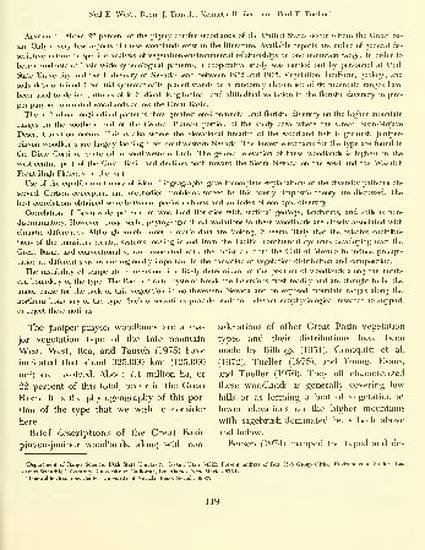
Article
Phytogeographical Variation Within Juniper-Pinyon Woodlands of the Great Basin
Great Basin Naturalist Memoirs
(1978)
Abstract
About 22 percent of the pigmy conifer woodlands of the United States occur within the Great Basin. Only a very few reports of these woodlands exist in the literature. Available reports are either of general descriptive nature or specific analysis of vegetation-environmental relationships on one mountain range. In order to better understand basin-wide synecological patterns, a cooperative study was carried out by personnel at Utah State University and the University of Nevada-Reno between 1972 and 1975. Vegetation, landform, geology, and soils data obtained from 463 systematically placed stands on a randomly chosen set of 66 mountain ranges have been used to derive patterns of latitudinal, longitudinal, and altitudinal variation in the floristic diversity in juniper-pinyon dominated woodlands across the Great Basin. The latitudinal-longitudinal patterns show greatest environmental and floristic diversity on the higher mountain ranges on the southern end of the Central Plateau portion of the study area where the Great Basin-Mojave Desert transition occurs...
Disciplines
Publication Date
1978
Publisher Statement
http://www.jstor.org/stable/23376562
Citation Information
Neil E. West. "Phytogeographical Variation Within Juniper-Pinyon Woodlands of the Great Basin" Great Basin Naturalist Memoirs Vol. no. 2 (1978) p. 119 - 136 Available at: http://works.bepress.com/neil_west/60/
